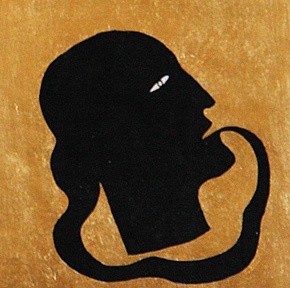Mimmo Paladino, Engravings
The Museo de Bellas Artes of Bilbao will be joining the 3rd International Print Festival (FIG), to be held in Bilbao on 20-23 November, with a major exhibition devoted to the graphic work of Italian artist Mimmo Paladino.
The show includes 194 prints, 2 of them printed especially for the exhibition, and artist's books produced over the last 20 years, as well as several original printmaking plates, the first ever screening in Spain of the feature film Quijote and a variety of documentary material.
Mimmo Paladino (Paduli, Benevento, Campania region, Italy, 1948) is one of the leading exponents of Italian contemporary art and is also widely renowned in international art circles. He started out as an engraver in the late 1970s, and since then he has used a wide variety of techniques and procedures to express a highly personal iconographic universe that drinks deeply of the history of art and culture. Like other contemporary artists, Paladino has found printmaking to be an intimate, personal medium of expression that allows him to combine a wealth of cultural knowledge with his own world of memories and experiences.
The ample selection of works now displayed at the museum is a fundamental part of the author's artistic output, which over the years have grown into a vast creative corpus comprising more than 800 graphic images. This makes the show an exceptional opportunity to discover many of the constants in this artist's career and trace his evolution on a journey through this broad selection featuring nearly 200 works of art.
Some of the highlights are the monumental Quattordici stazioni per Napoli (Fourteen Stations for Naples), the artist's book Ombre (Shadows, 2008), the illustrations for the book Don Chisciotte (Don Quixote, 2005) and the series Ulysses (1994) and Cruces (Crosses, 2008).
His restless creative mind draws on a vast iconographic repertoire that includes the myths and fables of Antiquity, folk tales and legends, historical and literary references, and even autobiographical images, from his own memories and dreams to the southern land of his birth. In this respect, he has been described as an artist with ties to both the Byzantine hieratic style and Gothic tradition.
In this way, he culls formal resources and images from the most diverse cultural traditions, from different eras and places. His prints contain references to iconic elements of classical culture like the mask, which in Paladino's work can perhaps be interpreted as a reflection of the artist himself. We also find animal figures such as the bucranium, a symbol of meditation, or the dog which, divested of its symbolic guardian status, becomes an unsettling presence.
From religious iconography (Judaeo-Christian and other traditions) he borrows signs, like the crosses, and techniques like the application of gold leaf, a symbol of eternity, as well as the hieratic pose of Byzantine figures and the gestural quality of that culture's rites.






